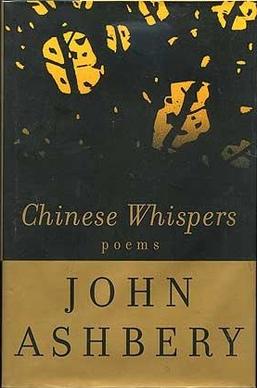
Edward Lear was an English artist, illustrator, musician, author and poet, who is known mostly for his literary nonsense in poetry and prose and especially his limericks, a form he popularised.

"Jabberwocky" is a nonsense poem written by Lewis Carroll about the killing of a creature named "the Jabberwock". It was included in his 1871 novel Through the Looking-Glass, the sequel to Alice's Adventures in Wonderland (1865). The book tells of Alice's adventures within the back-to-front world of Looking-glass world.

Colorless green ideas sleep furiously was composed by Noam Chomsky in his 1957 book Syntactic Structures as an example of a sentence that is grammatically well-formed, but semantically nonsensical. The sentence was originally used in his 1955 thesis The Logical Structure of Linguistic Theory and in his 1956 paper "Three Models for the Description of Language". There is no obvious understandable meaning that can be derived from it, which demonstrates the distinction between syntax and semantics, and the idea that a syntactically well-formed sentence is not guaranteed to be semantically well-formed as well. As an example of a category mistake, it was used to show the inadequacy of certain probabilistic models of grammar, and the need for more structured models.

A limerick is a form of verse that appeared in England in the early years of the 18th century. In combination with a refrain, it forms a limerick song, a traditional humorous drinking song often with obscene verses. It is written in five-line, predominantly trimeter with a strict rhyme scheme of AABBA, in which the first, second and fifth line rhyme, while the third and fourth lines are shorter and share a different rhyme.
Light poetry or light verse is poetry that attempts to be humorous. Light poems are usually brief, can be on a frivolous or serious subject, and often feature word play including puns, adventurous rhyme, and heavy alliteration. Typically, light verse in English is formal verse, although a few free verse poets have excelled at light verse outside the formal verse tradition.
An anapaest is a metrical foot used in formal poetry. In classical quantitative meters it consists of two short syllables followed by a long one; in accentual stress meters it consists of two unstressed syllables followed by one stressed syllable. It may be seen as a reversed dactyl. This word comes from the Greek ἀνάπαιστος, anápaistos, literally "struck back" and in a poetic context "a dactyl reversed".
In rhetoric, zeugma and syllepsis are figures of speech in which a single phrase or word joins different parts of a sentence.
In its strictest sense, tmesis is a word compound that is divided into two parts, with another word infixed between the parts, thus constituting a separate word compound. Example: "un-freaking-believable". In a broader sense, tmesis is a recognizable phrase or word that is divided into two parts, with one or more words interpolated between the parts, thus creating a separate phrase.
Nonsense is a communication, via speech, writing, or any other symbolic system, that lacks any coherent meaning. Sometimes in ordinary usage, nonsense is synonymous with absurdity or the ridiculous. Many poets, novelists and songwriters have used nonsense in their works, often creating entire works using it for reasons ranging from pure comic amusement or satire, to illustrating a point about language or reasoning. In the philosophy of language and philosophy of science, nonsense is distinguished from sense or meaningfulness, and attempts have been made to come up with a coherent and consistent method of distinguishing sense from nonsense. It is also an important field of study in cryptography regarding separating a signal from noise.
Sound poetry is an artistic form bridging literary and musical composition, in which the phonetic aspects of human speech are foregrounded instead of more conventional semantic and syntactic values; "verse without words". By definition, sound poetry is intended primarily for performance.
A word salad, or schizophasia, is a "confused or unintelligible mixture of seemingly random words and phrases", most often used to describe a symptom of a neurological or mental disorder. The term schizophasia is used in particular to describe the confused language that may be evident in schizophrenia. The words may or may not be grammatically correct, but are semantically confused to the point that the listener cannot extract any meaning from them. The term is often used in psychiatry as well as in theoretical linguistics to describe a type of grammatical acceptability judgement by native speakers, and in computer programming to describe textual randomization.

Children's poetry is poetry written for, appropriate for, or enjoyed by children.

Literary nonsense is a broad categorization of literature that balances elements that make sense with some that do not, with the effect of subverting language conventions or logical reasoning. Even though the most well-known form of literary nonsense is nonsense verse, the genre is present in many forms of literature.
Nationality words link to articles with information on the nation's poetry or literature.
Nationality words link to articles with information on the nation's poetry or literature.
Nationality words link to articles with information on the nation's poetry or literature.
"On the Ning Nang Nong" is a poem by the comedian Spike Milligan featured in his 1959 book Silly Verse For Kids. In 1998 it was voted the UK's favourite comic poem in a nationwide poll, ahead of other nonsense poems by poets such as Lewis Carroll and Edward Lear.

Chinese Whispers is a 2002 poetry collection by the American writer John Ashbery. It was Ashbery's 20th collection and consists of 65 individual poems.
Anushka Ravishankar is an author of children's books, and co-founder of Duckbill Books, a publishing house.
Poetic devices are a form of literary device used in poetry. Poems are created out of poetic devices via a composite of: structural, grammatical, rhythmic, metrical, verbal, and visual elements. They are essential tools that a poet uses to create rhythm, enhance a poem's meaning, or intensify a mood or feeling.







